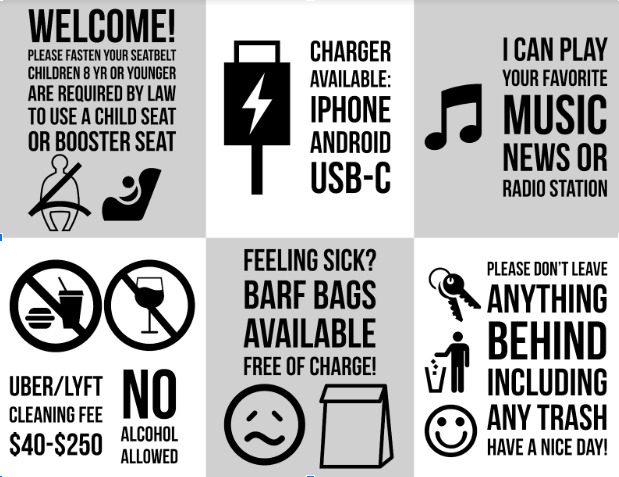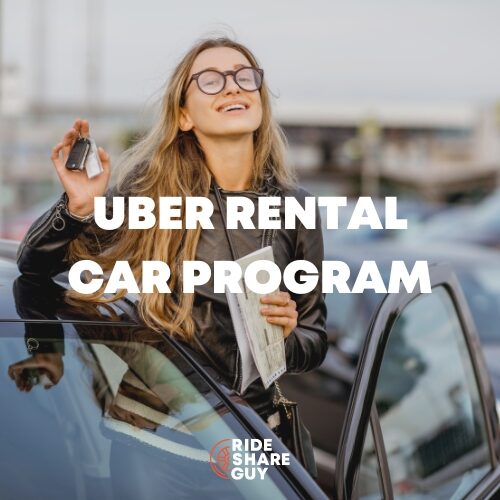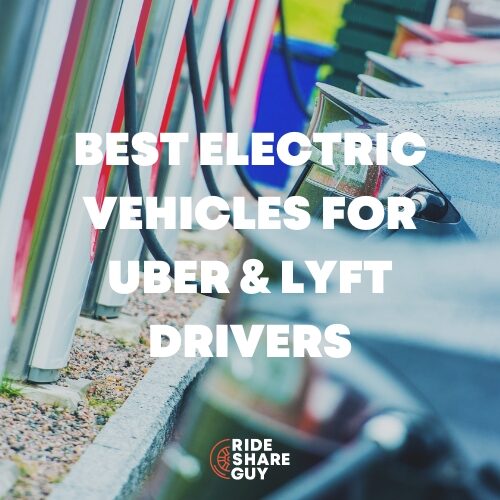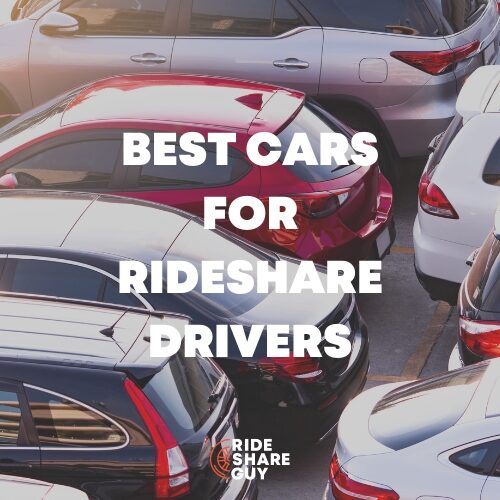Recently, we asked drivers on Facebook what they thought of driver signs (like the one below). Reactions were mixed: some find signs for passengers helpful, whereas others think they’re tacky. Do driver signs actually work, or are they mostly ignored by passengers? Are they tacky? RSG contributor Paula Gibbins tackles the driver signs debate below.
There are two sides to the ‘do driver signs actually work?’ argument, obviously. One is for the signs, as they might incentivize more tips from your passengers if they notice all of the extra steps you’re taking to make them happy and because it may just provide helpful info to your passenger. The other is a big “NO” and that is typically from the people who do not provide those extras because they are not paid to do so by Uber or Lyft, so why bother?
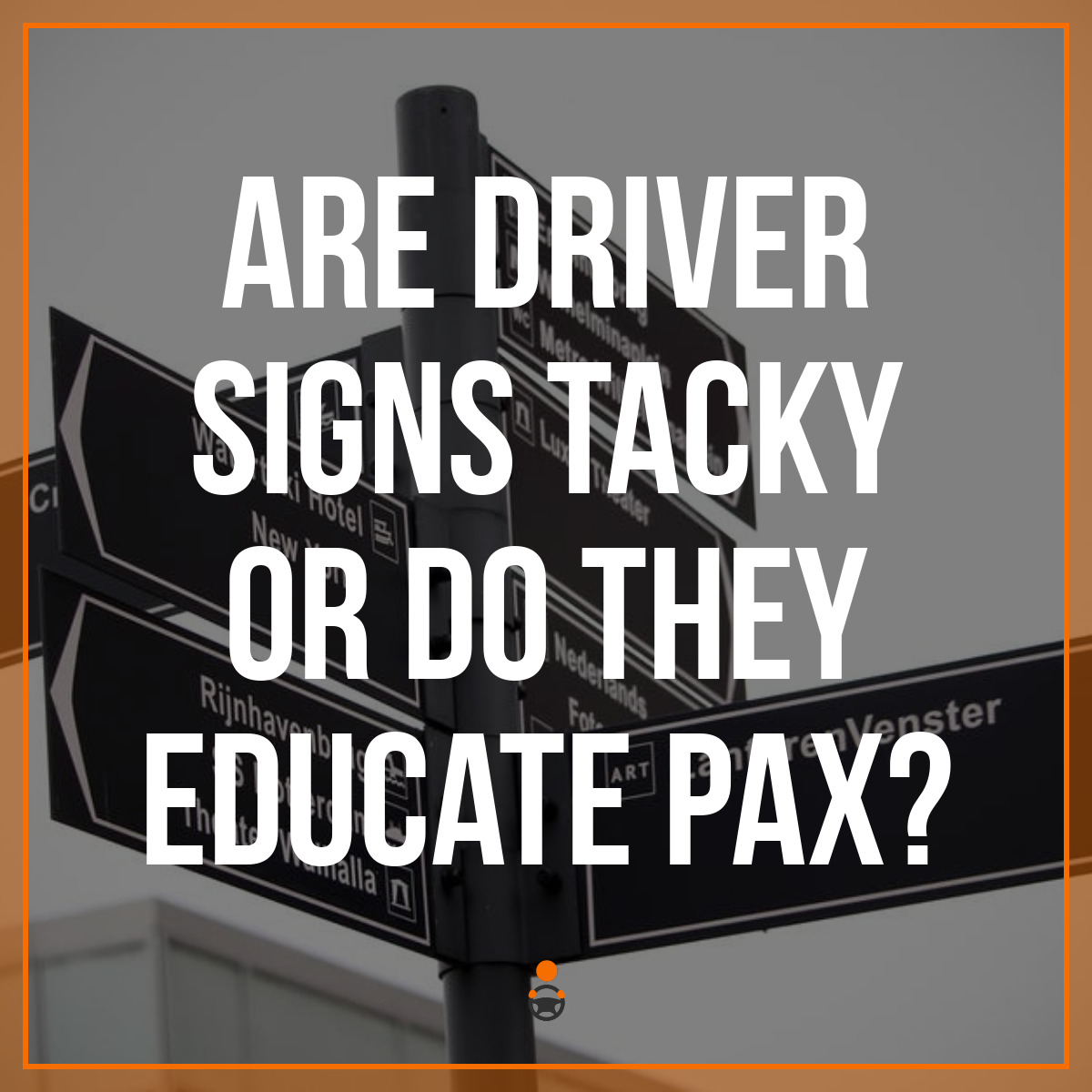
Example of a sign you can use in your car
Arguments Against Driver Signs
Since majority of our readers responded negatively toward the idea of signs, let’s address their concerns and reasons first. Clearly, if you don’t provide passengers with AUX cords or charging cables, or their choice of music, a sign stating that you do would not work at all. But, it’s more than just that.
Signs clutter up the interior of your car. Either you put it on the headrest facing your passengers or your center console. Either way, it’s taking up room and most cars don’t give a whole lot of extra space as it is. Some also consider these signs to be tacky and think they will negatively affect your overall rating, and they have a point. It may depend on what your sign says. I recall riding in one driver’s car where they had a sob story posted and basically begged for tips. I did not tip this person because I felt like they were just begging for money.
Also, passengers all signed the terms of service agreement, so they should know the local laws and follow them, such as car seats or boosters for their children. And, out of respect for drivers, they shouldn’t even ask to smoke or vape in a vehicle that isn’t their own. Why should I, as a driver, have to point that out?
Along that same vein, it’s rude to leave trash behind. I’ve had a few passengers ask me if it’s ok to eat in my car, which I’ve personally allowed. I know that part of my service to them is getting them to their jobs when they might not have enough time to sit down to a meal beforehand, so I’m cool with my passengers scarfing down some food along the way, as long as they don’t make a mess of it in the meantime.
Others point out that the passengers aren’t going to read the signs anyway, or if they do, they won’t follow what the sign says.
All in all, as one driver said on Facebook. “I get you from A to B safely. That should suffice!”
Arguments for Driver Signs
If you provide extra amenities, most passenger aren’t going to assume that you do or ask about it. They will just sit there and think it’s an average, everyday ride. If you have a sign, they’ll see you’re trying to go the extra mile for them and may appreciate you more as a driver. In that respect, it may positively affect your ratings and increase your chance for tips.
It helps passengers know what’s going on. Even with a sign up in my car, people still ask if the water is free (it is), or they ask if they can use the chargers that are back there provided for them. The sign just helps out a little bit in this respect. If people fully read my sign, they would see that the water is in fact free for them to take. Also, having a van, I keep a decent sized trash can around, so it’s expected to clean up after yourselves, but not necessary to take your trash with you — again, going for that convenience thing might help get you tips.
Sometimes the signs can prove useful just to point out basic laws that passengers seem to forget about when taking Ubers and Lyfts. We are not allowed to transport your small children without proper car seats. Having the sign point this out is sometimes easier and less confrontational than having to say it out loud to your passenger. Or, if you are shuttling someone somewhere and they read it in your car, they may remember it for a time when they are bringing a child with them somewhere.
To go along with that, one big one I’ve had to deal with is simply buckling up. You’re an adult so you can make your own choices, but it is illegal in my state for anyone in the vehicle to not be buckled up, so it’s a friendly reminder to people who don’t normally follow that law.
Should You Ask for Tips?
This is another controversial part of adding signs. Should you ask for a tip? If so, how do you go about asking for it? Many say don’t flat out ask for tips but instead say something along the lines of “If I exceeded your expectations, tips are appreciated.” Or, “Tips are not required, but are appreciated.”
Personally, I feel like I noticed a positive difference in my tips when I added a sign to my car. Granted, this was also before tips were available within the Uber app, so it was also a lot of people asking how to tip.
Should You Add a Driver Sign to Your Car?
Obviously, it’s 100% up to you if you put a sign in your car. If you’d like to add a sign to your car, you can copy the one above or the one below, created by RSG reader Eduardo S.
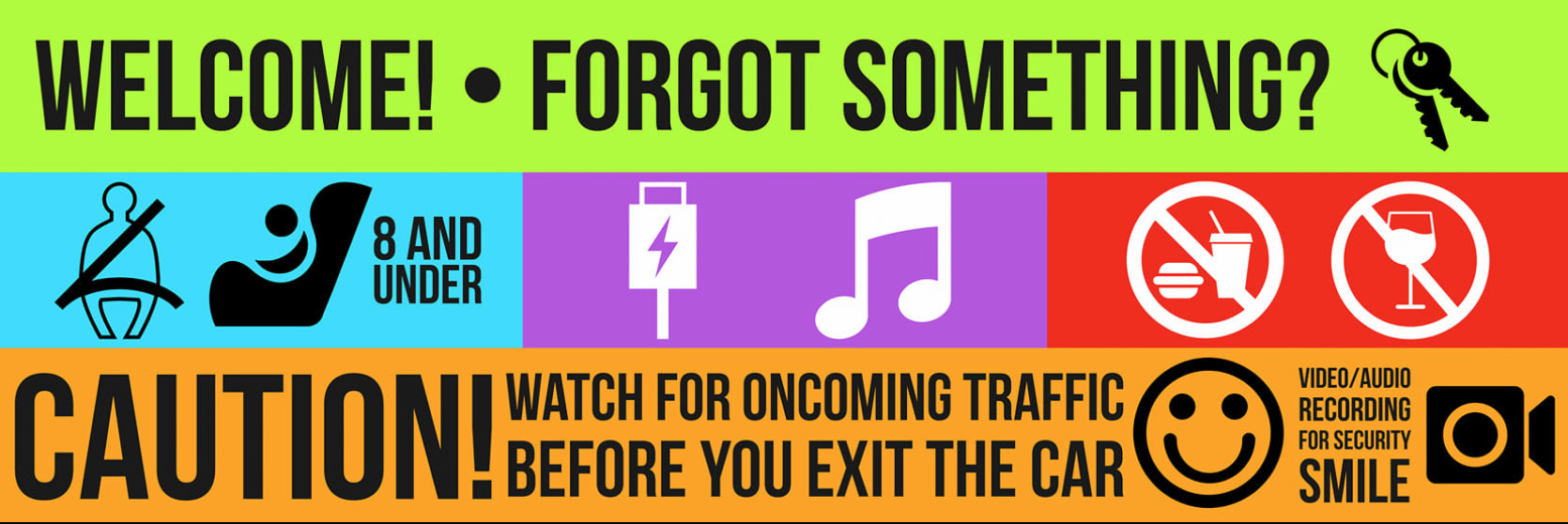
Customize the sign to suit your needs if you want one. The worst would be having a sign that promises free barf bags when you don’t actually provide them, or something similar.
If you don’t like the signs, no need to add them. For the most part, no one says they’ve increased tips (although there are plenty of anecdotes).
Drivers, do you have a sign in your car? If so, what does it say?
-Paula @ RSG
